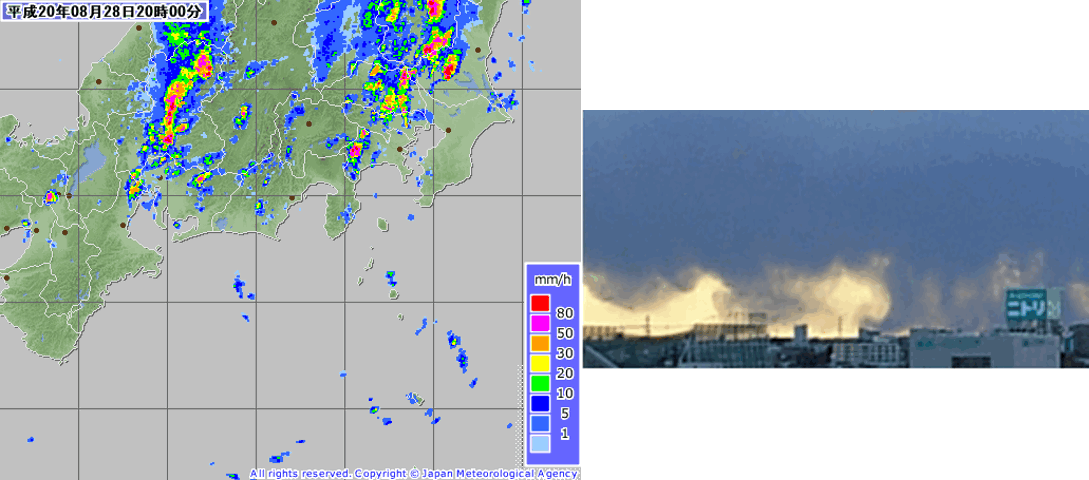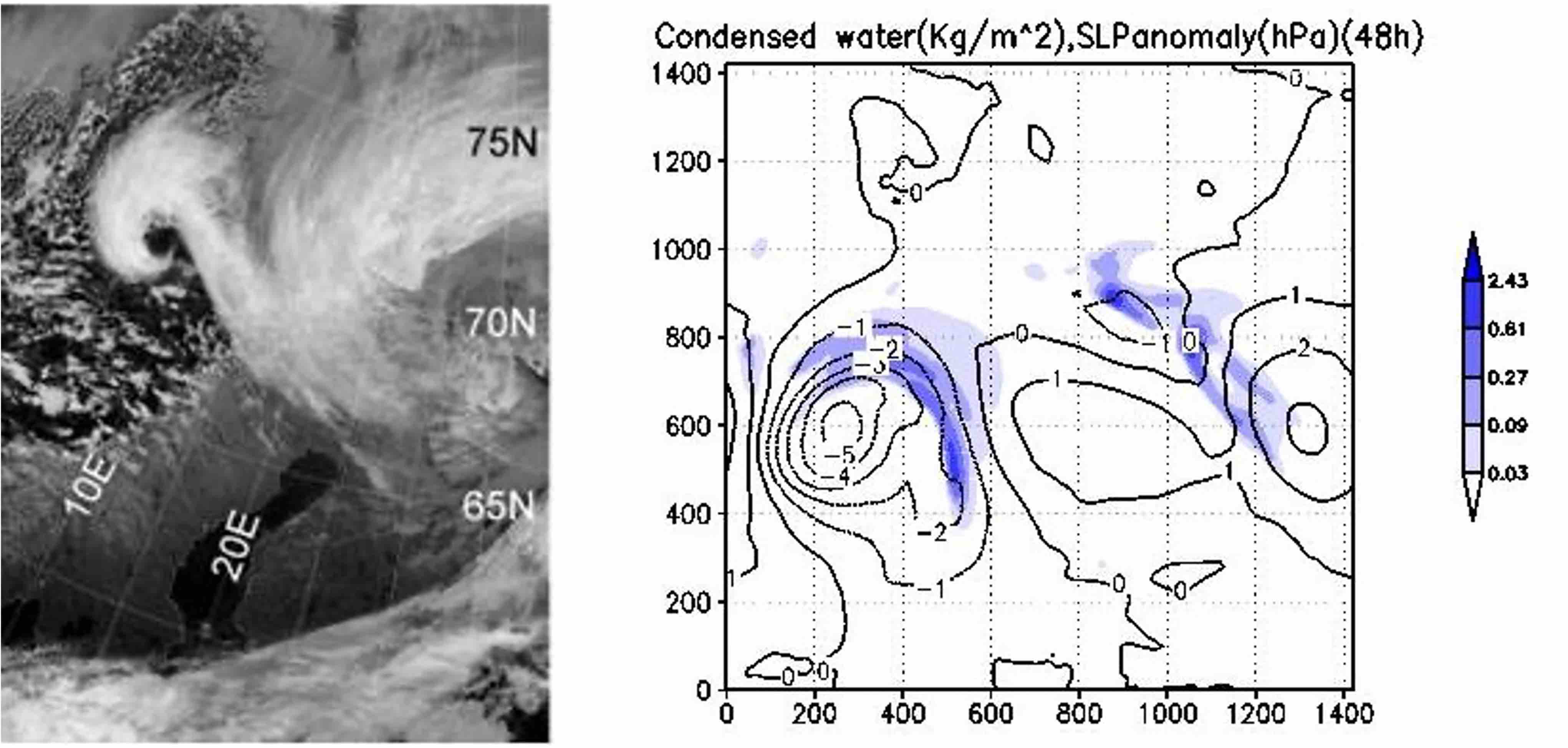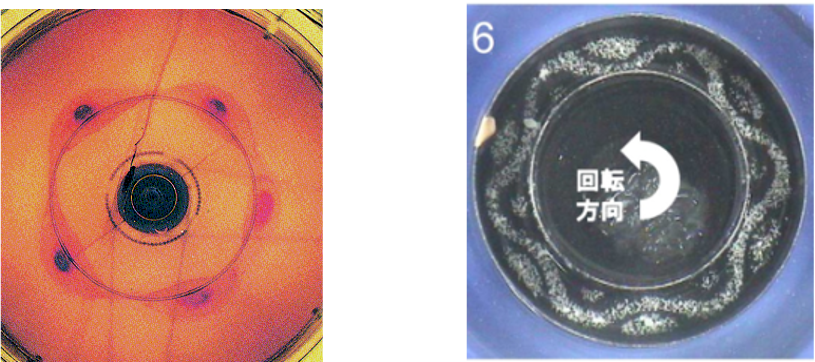Research Activities
The atmosphere and oceans, which govern the Earth's climate, constitute a complex coupled system that interacts strongly with each other through the sea surface. With the exception of tides, most ocean motions are driven by wind stresses and fluxes of heat, water, and other elements that the atmosphere imparts to the sea surface. On the other hand, heat and water vapor supplied by the sea surface have a significant influence on the generation and development of disturbances at various scales, such as convection and cyclones in the atmosphere. It is now more strongly recognized than ever before that an understanding of fundamental atmospheric and oceanic processes, including convection and turbulence, is essential to accurately understand and accurately predict the behavior of such complex systems.
The group is investigating the reality, structure, and mechanisms of various atmospheric and oceanic disturbances such as convection, turbulence, and cyclones related to the interaction between the atmosphere and the ocean through a variety of methods including analysis of observational data, numerical simulations, dynamical theory, and laboratory fluid experiments.
● Cloud-resolving Model

Lattice obtained by dividing an icosahedron three times.

but (right) mesocirculation associated with convection can be represented at a mesh spacing of 5 km or less.
Climate change and climate variability associated with the increase in greenhouse gases have been the focus of much attention in recent years. One of the major uncertainties in predicting these phenomena using numerical simulation models is the small-scale phenomena such as cumulus convection, which cannot be represented explicitly in conventional climate models. It is one of the very interesting features of atmospheric and oceanic motion that climate changes occurring on a global scale are actually strongly dependent on small convective phenomena.
The Sato Laboratory and other groups are studying these convection phenomena and developing a global cloud-resolving model, NICAM (Nonhydrostatic ICosahedral Atmospheric Model), that resolves convection globally. NICAM is capable of covering the entire globe with a horizontal mesh of less than 5 km. Conventional atmospheric general circulation models used for global warming forecasting and other purposes cannot resolve the cloud precipitation process in the tropics, which is important as a driver of the atmospheric general circulation, because the horizontal resolution is limited to several tens of kilometers or more. This uncertainty in the cloud precipitation process is one of the most material sources of uncertainty in climate projections. NICAM attempts to remove this uncertainty by providing a faithful representation of the cloud precipitation process.
● Meso and Tropical Systems

(right) Cloud image obtained by NICAM and (left) infrared cloud image by geostationary meteorological satellite MTSAT-1R (00 UTC on December 29, 2006; by Dr. Hiroaki Miura).

Using NICAM, cloud clusters associated with the Madden-Julian Oscillation (MJO), which closely resemble reality, are reproduced. The interior of the MJO captures tropical multi-scale cumulus structures: eastward moving supercloud clusters, westward moving cloud clusters on a scale of several hundred kilometers, and cumulus on a scale of about 10 km.
In recent years, the frequent occurrence of torrential rains, including rainfall zones called the senjo-kosuitai, has become a social problem. We also investigate in detail the generation mechanisms, behavior, and mechanisms of cumulonimbus clouds, torrential rains, dust whirlwinds, and downbursts, as well as the turbulent structure of the atmospheric boundary layer.
● Typhoon Simulation

NICAM makes it possible to realistically calculate cloud precipitation systems over the entire globe. The model is expected to provide more reliable forecasts for the occurrence and development of typhoons, summer weather, and frequency of heavy rainfall, which have been difficult to predict with conventional methods.
● Atmospheric Disturbances


Over the high latitude oceans in winter, intense low-pressure systems called polar lows with typhoon-like eyes and spiral bands. These vortices develop through complex interactions with cumulonimbus clouds and atmosphere-ocean heat and vapor fluxes.
Understanding the mechanisms of atmospheric and oceanic boundary layer turbulence and the resulting atmospheric and oceanic disturbances involved in the exchange of physical quantities between the atmosphere and the ocean is essential to understanding the atmosphere-ocean interaction.
● Jets and Vortex Rows

Strong currents such as the Kuroshio continuation and the Gulf Stream in the ocean and weak wind areas downwind of the mountains often result in the formation of vortex lines. Occasional cloud sequences seen downwind of Jeju Island during winter are known to form such patterns. By using a simple idealized model, the process of forming a vortex train from a linear flow can be reproduced and its statistical properties can be studied.
● Rotating Tank Experiment


Various phenomena found in atmospheric and oceanic currents are captured in as simplified a manner as possible, and the situation in which the essence of the phenomena is extracted is reproduced in an indoor tank. Through indoor experiments, we elucidate the mechanism of complex flows.
In addition to the basic flow, typhoons will be reproduced by such experiments and rotating tanks are used in the "Typhoon Shot Project" which aims to artificially control the threat of typhoons while making effective use of their energy.